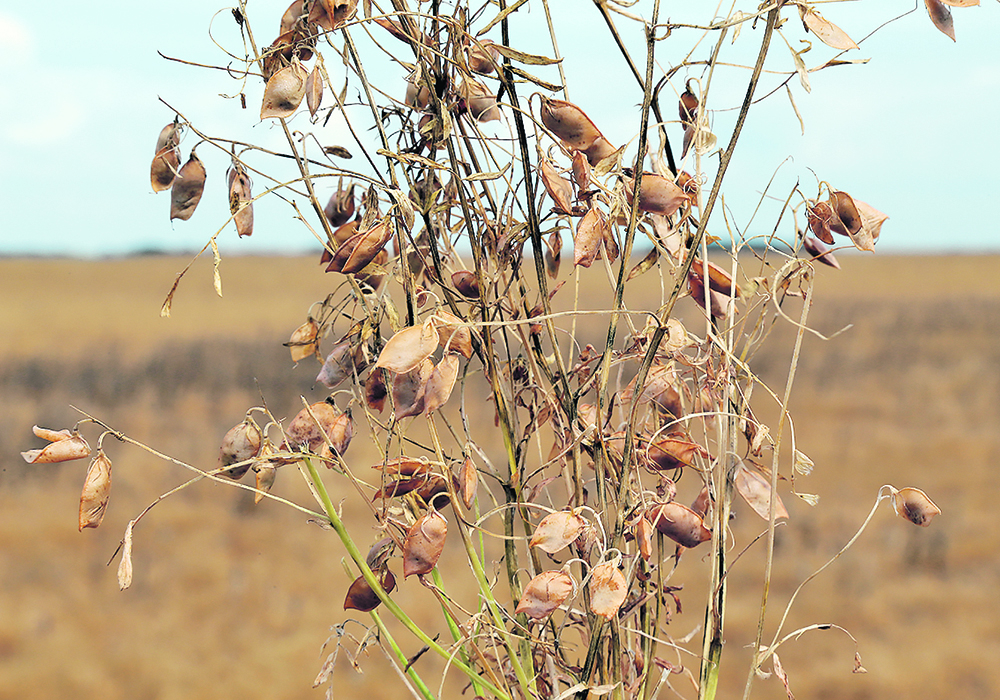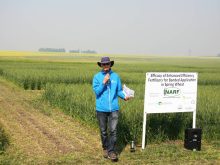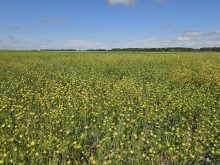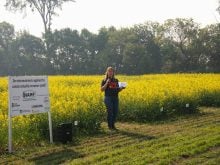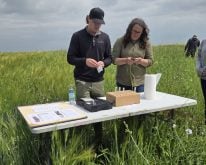Sask. gov’t, farm groups kick in $4.2 million to tackle aphanomyces and other diseases that threaten pea and lentil crops
A $4.2 million investment in root rot research is a “big deal” for farmers and Canada’s pulse industry, says a University of Saskatchewan scientist.
Saskatchewan agriculture minister David Marit announced $2.5 million in provincial and federal funding last week to find solutions for root rot in peas and lentils.
Saskatchewan Pulse Growers, the Western Grains Research Foundation, the Alberta Pulse Growers Commission, Results Driven Agriculture Research and Manitoba Pulse and Soybean Growers contributed another $1.7 million to the project.
The funds are part of a Strategic Research Initiative in Saskatchewan to tackle the thorny problem of aphanomyces and other diseases in the root rot complex.
Read Also

Using artificial intelligence in agriculture starts with the right data
Good data is critical as the agriculture sector increasingly adopts new AI technology to drive efficiency, sustainability and trust across all levels of the value chain.
“I think it is as very big deal,” said Sabine Banniza, a University of Saskatchewan plant pathologist.
“It’s the first time a concentration of funding (has been) put to this issue.”
Banniza will lead a team of about 15 scientists from the U of S, Agriculture Canada and the National Research Council who will focus their efforts on the root rot challenge.
“(This) will develop new options to manage root rot and will contribute to preserving and expanding the pea and lentil acres in our province,” says a Saskatchewan government release.
Soil diseases such as aphanomyces and fusarium have become a massive challenge for lentil and pea growers in Western Canada. If root rot pathogens get established in a particular field, producers don’t have tools to combat the problem. The crop protection industry and researchers haven’t discovered fungicides or developed varieties with genetic resistance to the diseases.
The main option for growers is waiting six to eight years for spore counts to sufficiently drop before growing peas or lentils again.
“Aphanomyces root rot causes severe damage to the roots, causing infected plants to wilt and die prematurely. In wet years, high yield loss in peas has been observed under … high infections,” says SaskPulse’s website.
Some progress has been made, such as identifying genes that could provide resistance to Aphanomyces in the future.
But most of the work has been disconnected from other projects.
The Strategic Research Initiative will bring the researchers under the “same umbrella,” Banniza said.
“They (the funders) wanted to put it all together… (so) the scientists from the different disciplines look at the problem in a more comprehensive way.”
One of Banniza’s short-term goals is to help growers with the following question: how long to wait between growing peas or lentils?
The current recommendation to wait six to eight years is based on anecdotal evidence.
“It is guesswork for when it’s safe to put pea or lentil back into that field,” said Syama Chatterton, a plant pathologist with Agriculture Canada in Lethbridge, who studies diseases of pulses and special crops.
Banniza and her team want to find a more definitive answer so growers can make an informed choice for their farm and their situation.
In another part of the project, an Agriculture Canada scientist will be studying RNAi solutions for aphanomyces.
In a broad sense, RNA interference could be defined as a molecular fungicide. Scientists create a molecule — a double stranded RNA — that silences an important gene in a pest and shuts down production of a target protein in the pest.
A paper by researcher Mark Belmonte from the University of Manitoba provides a short explanation of the approach.
“RNAi-based crop protection technologies can be designed in two ways. First, through a topical approach where the double stranded RNA is applied as a spray,” says the paper published in PLOS One.
“Second, through genetic modification of the host plant to produce… dsRNA molecules targeting the pathogen…. Both methods have proven effective at limiting infections and disease symptoms of various fungal pathogens.”
Designing something like that for aphanomyces represents a longer-term solution for pulse growers in Canada.
“That could be a game changer,” Banniza said.


